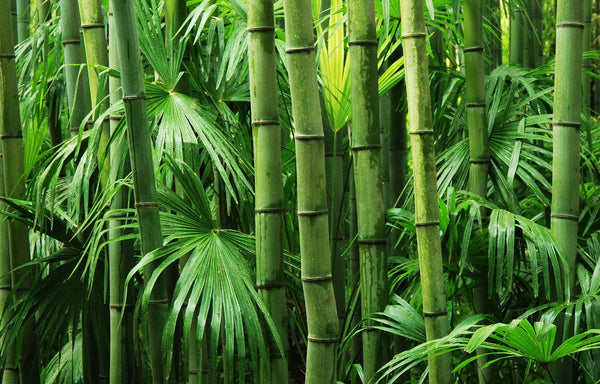Bamboo: Nature's Super Plant
Although bamboo has a woody-tree-like appearance it is a member of the grass family, Graminea. According to The World Bamboo Organisation, there are over 1500 different varieties that can thrive in many different climates and countries all around the world, not just in Asia. In fact, Australia has three native species, Bambusa arnhemica, Mullerochloa moreheadiana, and Neololeba atra found in the Northern Territory and Queensland.
On average, a bamboo plant can grow around one meter a day, making it the fastest-growing plant in the world, reaching maturity in just five years. To put this into perspective, a Red Maple Tree will grow to maturity in twenty-five years. Unlike most trees, bamboo requires very little water, additional resources such as fertilisers, and very little maintenance to not only survive but thrive. If this wasn’t impressive enough, bamboo plants are also naturally resistant to most pests and insects and do not require the intervention of pesticides and insecticides, both of which are large producers of carbon dioxide, methane and nitrous oxide, which are the main causes of greenhouse gas emissions.

Due to its rapid growth, bamboo plants absorb and store massive amounts of atmospheric carbon dioxide, CO2. One hectare of bamboo can absorb around 17 tonnes of CO2 annually and produce 30% more oxygen than most hardwood tree plantations of the same size. Bamboo is one of the few plants rooting and producing rhizomes (stems) underground. Given the unique nature of bamboo, it can produce shoots even if the entire stem has been cut away making it continuously renewable.
Although the roots and stems are only shallow growing, they are very durable and incredibly strong. Because of this, bamboo is often planted to bind together loose soil in areas that are in danger of being eroded or washed away from flooding. While the flexibility of the stems ensures that it doesn’t snap or become uprooted during stormy weather conditions. Bamboo is also being used as an alternative to standard wood as it is heat resistant and less likely to warp or rot in humid and wet conditions.
Bamboo has been a staple material throughout history for constructing homes, sailing vessels, furniture, home and kitchenware, food, and more recently, the global textile industry. With it needing a third of the amount of water required to grow cotton, it’s no wonder researchers are constantly finding a variety of different ways to substitute bamboo as an environmentally conscious and renewable alternative for all things, including plastics and even paper.